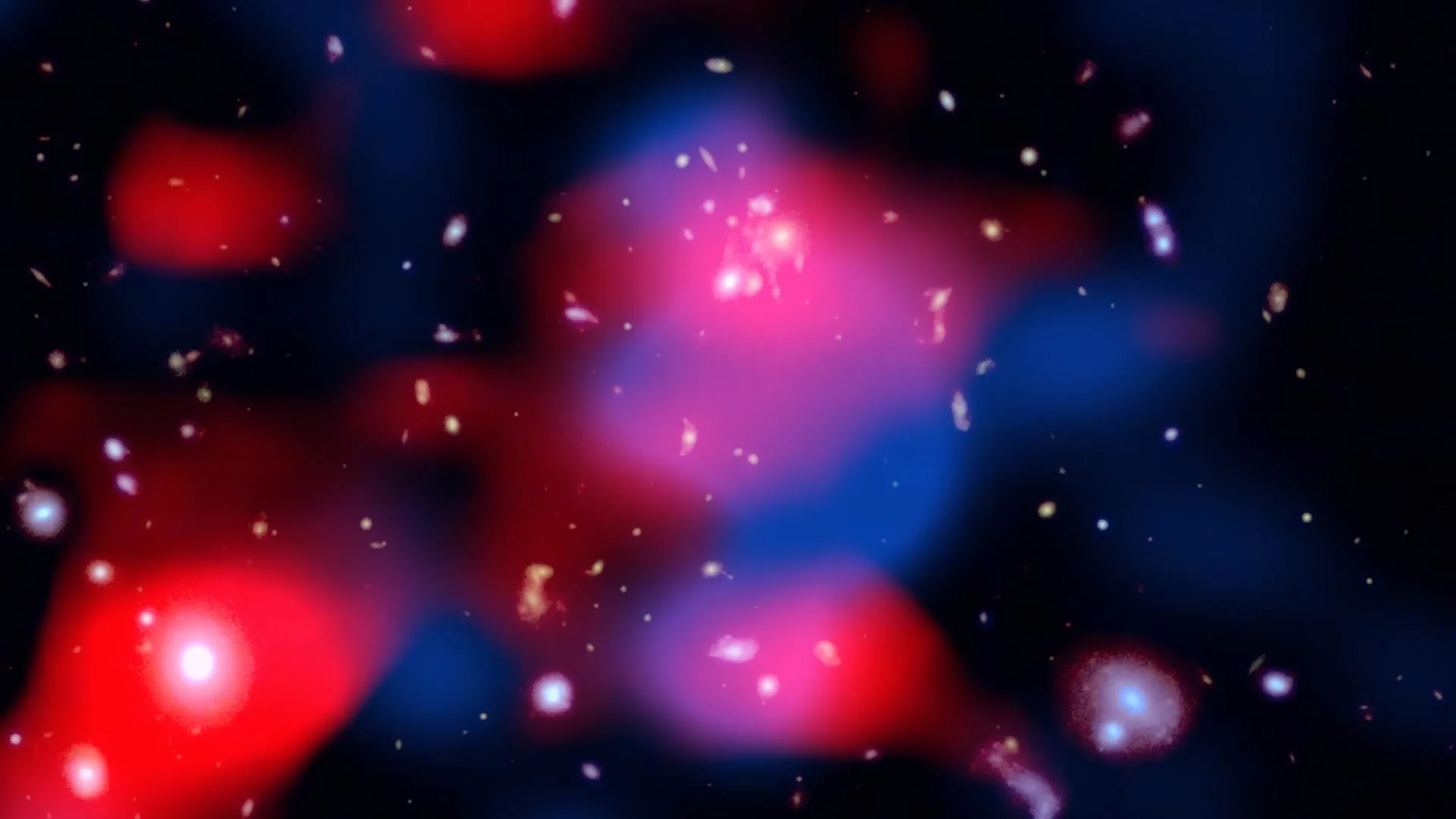Unveiling the Cosmic Ocean: A 10-Billion-Year Radio Halo Reshapes Our Universe's Genesis

"Unveiling the Cosmic Ocean: A 10-Billion-Year Radio Halo Reshapes Our Universe's Genesis"
In a groundbreaking revelation that could redefine our understanding of the cosmos, astronomers have uncovered an immense cloud of energetic particles—a 'mini halo'—enveloping one of the most remote galaxy clusters ever observed. This discovery marks a pivotal advancement in deciphering the concealed forces that sculpt the universe. The mini-halo resides at such an astonishing distance that its light takes a staggering 10 billion years to reach Earth, making it the most distant of its kind ever detected, effectively doubling the previous record known to science. This finding underscores that galaxy clusters, among the universe's most colossal structures, have been bathed in high-energy particles for the majority of their existence.
These mini-halos, composed of highly energetic, charged particles suspended in the vacuum between galaxies within a cluster, collectively emit radio waves detectable from Earth. This revelation, accepted for publication in The Astrophysical Journal Letters and currently available in pre-print, illustrates that even in the universe's infancy, galaxy clusters were already being shaped by energetic processes. The international research team responsible for this discovery was co-led by Julie Hlavacek-Larrondo of Université de Montréal and Roland Timmerman of the Institute for Computational Cosmology at Durham University in the U.K.
The researchers meticulously analyzed data from the Low Frequency Array (LOFAR) radio telescope, a sprawling network of over 100,000 small antennas distributed across eight European countries. While scrutinizing a galaxy cluster named SpARCS1049, they detected a faint, expansive radio signal. This signal did not originate from individual galaxies but from a vast expanse of space teeming with high-energy particles and magnetic fields. Spanning over a million light-years, this diffuse glow is a hallmark of a mini-halo, a structure astronomers had only been able to observe within the nearby universe until now.
"It's as if we've discovered a vast cosmic ocean, where entire galaxy clusters are constantly immersed in high-energy particles," remarked Hlavacek-Larrondo. Timmerman added, "It's astonishing to find such a strong radio signal at this distance. It means these energetic particles and the processes creating them have been shaping galaxy clusters for nearly the entire history of the universe."
The formation of the mini-halo could be attributed to two plausible explanations. One hypothesis suggests that supermassive black holes at the centers of galaxies within a cluster eject streams of high-energy particles into space. However, astronomers are still grappling with understanding how these particles could migrate away from the black hole to form such an enormous cloud while retaining their energy. The second possibility involves cosmic particle collisions, where charged particles within the hot plasma of the galaxy cluster collide at near-light speeds, fragmenting into the highly energetic particles observable from Earth.
This discovery offers a rare glimpse into the nature of galaxy clusters shortly after their formation. It not only reveals that these clusters have been infused with high-energy particles for billions of years longer than previously known but also provides astronomers with an opportunity to investigate the origins of these particles. The findings suggest that black holes and/or high-energy particle collisions have been enriching the environment of galaxy clusters much earlier than anticipated, sustaining their energy over billions of years.
As newer telescopes, such as the Square Kilometer Array (SKA), are developed, scientists will be able to detect even fainter signals and further explore the role of magnetic fields, cosmic rays, and energetic processes in shaping the universe. "We are just scratching the surface of how energetic the early Universe really was," said Hlavacek-Larrondo. "This discovery gives us a new window into how galaxy clusters grow and evolve, driven by both black holes and high-energy particle physics."
🔮 Fortellr Predicts
Confidence: 85%
The discovery of the 10-billion-year-old radio halo around the galaxy cluster SpARCS1049 will likely lead to several significant developments in both scientific understanding and sectoral investment. Initially, this will invigorate the field of cosmology, prompting increased study and debate regarding the early universe's conditions. Researchers will explore new models considering early and intense high-energy processes within galaxy clusters. Given the broader implications for cosmic evolution theories, numerous research collaborative initiatives will likely emerge, fostering cross-institutional studies. Investment in radio astronomy technology and data analytics is expected to rise, driven by the demonstrated success of the LOFAR network. This may spurn development in related disciplines such as high-performance computing and sensor technologies. Educational and scientific institutions could capitalize on the public interest, launching campaigns and materials to highlight the significance of this discovery, thereby securing more funding and partnerships. Over time, the insights gained from this finding could catalyze a reevaluation of existing cosmological models, potentially leading to new theoretical frameworks concerning galaxy formation and evolution. Additionally, the creation of new job opportunities in research and technology sectors could be observed as organizations expand their capabilities to explore these burgeoning areas of interest.